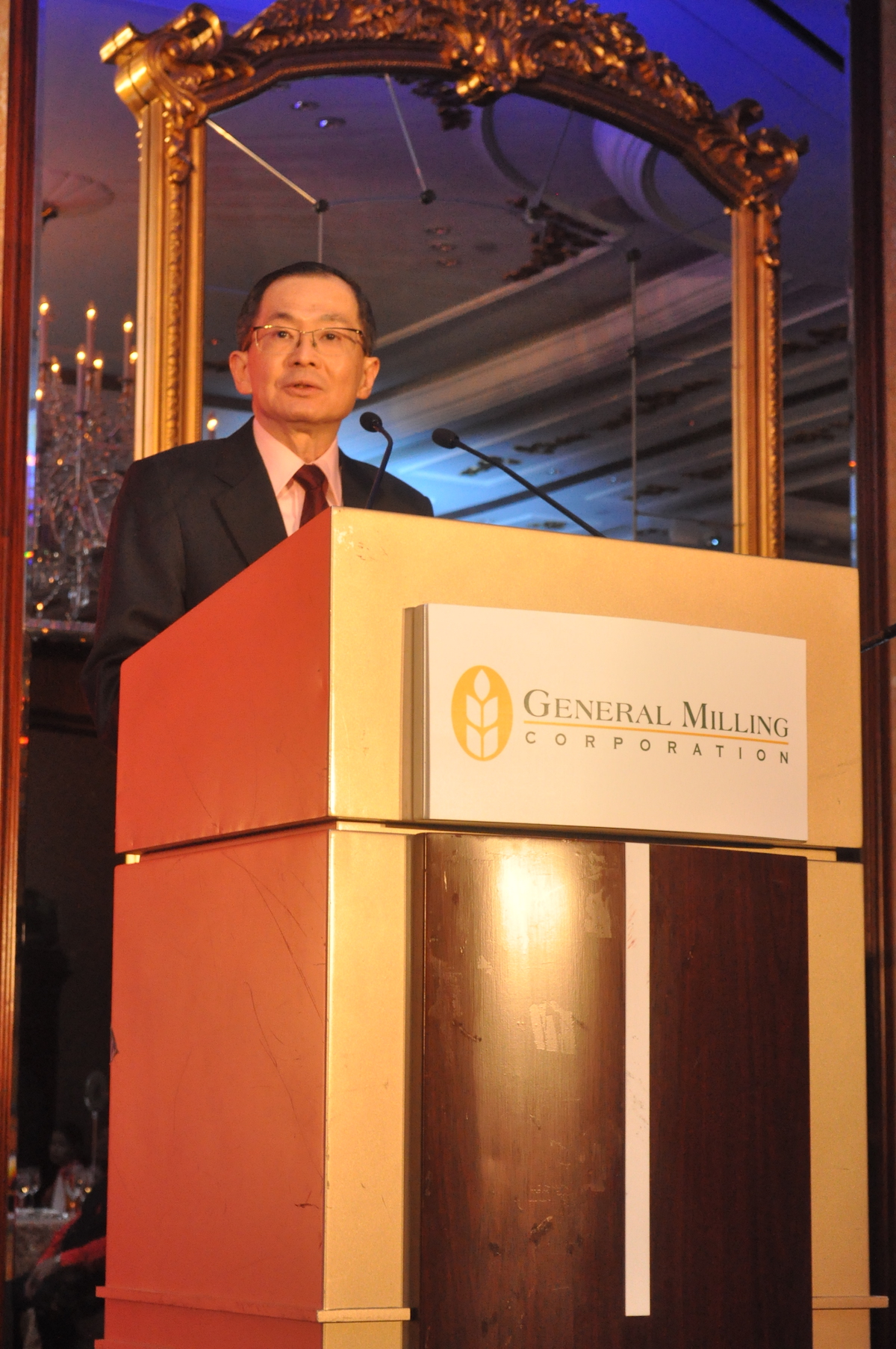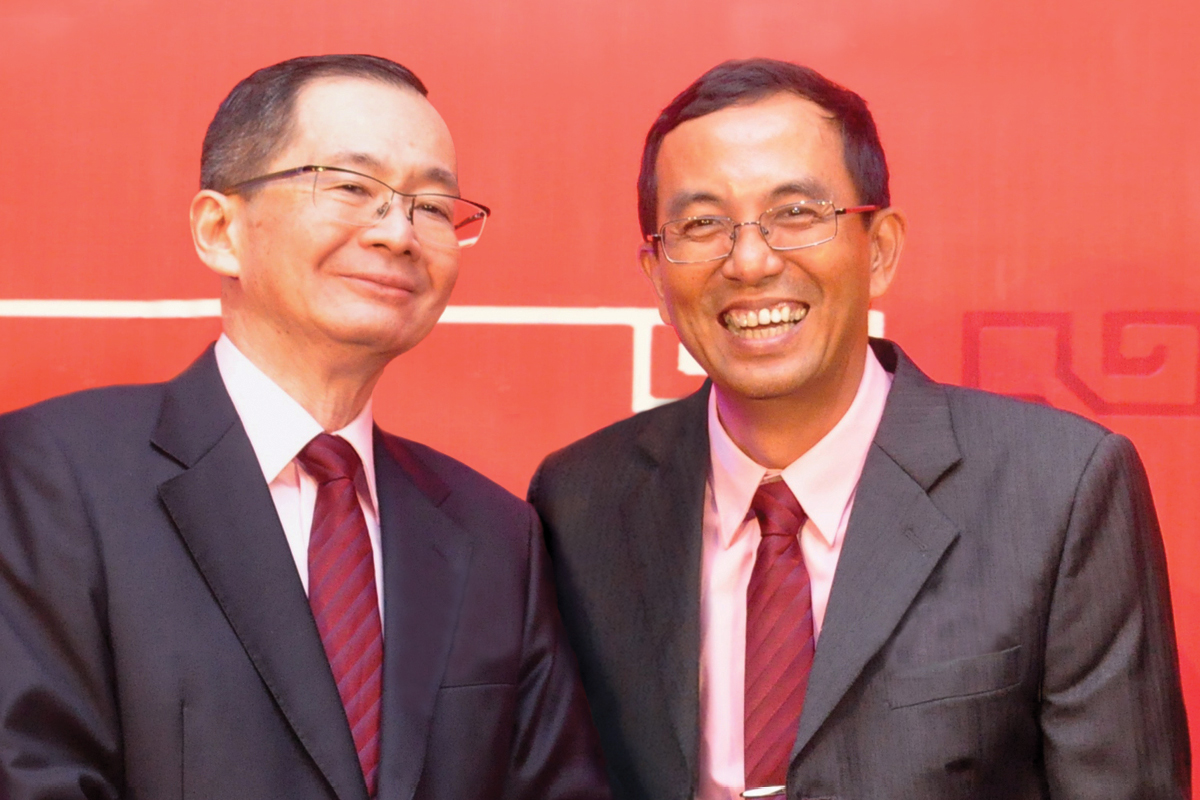The story of General Milling Corporation (GMC) begins with Tirso Uytengsu, a man with a vision to build a leading integrated food company in the Philippines. The grandson of Chinese immigrants who settled in Dumaguete City in the 1870s, Tirso had an early start in business. In 1923, he established the successful Uy Matiao & Co. with his uncles, Uy Matiao and Filomeno.
The company prospered through buying and selling staple goods, establishing sugar and corn mills and expanding into the transport industry. Eventually, however, the three founding families decided to go their separate ways and the company was dissolved.
This left Tirso, along with his son-in-law, George K Young Senior, free to pursue a new venture. They founded GMC in 1958 on the island of Mactan, in the province of Cebu. Construction of the flour milling plant began in 1959, and in 1961 the first commercially produced flour rolled out of the packing lines. For nearly six decades, the business has grown and flourished. GMC is now one of the biggest food companies in Visayas and Mindanao.
The business is still family run, with the third generation – George’s sons, and Tirso’s grandsons – at the helm. George Young Junior and his brothers, Hubert and Kirk Steven, all sit on the GMC board as well as on the executive committee. George is the current president, taking over from his father in 2000, while Hubert is treasurer and Kirk Steven is executive director.
The CEO Magazine recently spoke with George and his right-hand man, Executive Vice-President Joselito Parco, to find out how they are continuing the legacy of the company’s founders.
The CEO Magazine: GMC was established in the Philippines nearly 60 years ago. How has the business grown and changed over the years?
Joselito: From its beginnings in Cebu, GMC’s business now extends to most parts of the Philippines. Following the vision of the company’s founders, GMC expanded into the poultry and animal feeds business, pasta and noodle production, soybean processing, and corn starch manufacturing.

George: Flour milling remains the company’s core competency. We’ve recently directed our efforts to further improving and strengthening the flour milling and feeds manufacturing business, complementing these with a stronger logistics support network, bigger storage, and more modern raw material and finished-product handling facilities. In addition to its core businesses, GMC has a strategic partnership with Lesaffre for the distribution of the Red Star brand of baking-yeast products.
How has technology advanced since the company’s first flour mill was built in 1961?
George: Although the basic science for milling wheat into flour has hardly changed, the level of sophistication in the equipment has dramatically altered over the years. Monitoring equipment allows us to achieve higher levels of efficiency.
The materials used to manufacture rollers and sifters are more robust. Power consumption has been reduced. Food safety is now more assured. Equipment has also evolved to allow GMC to become a more reliable supplier of high-quality baking products and animal feeds in the industry.
How important is research and development at GMC?
Joselito: In the same way that GMC evolves, our customers also continue to change. Our R&D facility allows us to adapt to the changing needs of our customers.
From the simple bread applications to the more delicate pastry and frozen-dough applications, our research and development personnel stay one step ahead, so our customers can stay ahead of the curve.
We ensure they enjoy the advantages of quality materials that allow them to steam past the competition. We also provide full technical support for their business needs.
What are your plans to move the company forward?
George: The future of GMC will depend on our ability to face the challenges in the markets in which we choose to serve. For that, we need the strength of our human resources, which we refer to as the ‘GMC team’. At GMC, we believe that a company is only as strong as its human resources. Developing our human resources is thus an integral part of our plans for the future.
Our human resources development efforts start with the selection of employees; then they move on to skills and leadership training. It’s essential that our frontline personnel continue their interaction and involvement with our customers, while maintaining professionalism and representing the organisation with integrity.
Joselito: Our intention is to build for the long term. This is true for the plant and the infrastructure that we invest in. This is also true for the investments we put into growing and retaining our talented team.

How much impact does the mill have on local employment? And what’s the culture like at GMC?
George: GMC has a total of 400 employees, with allied support services contributing hundreds more in terms of local employment. At one time, GMC was the biggest single private sector employer on Mactan island.
Joselito: GMC’s company culture strives for balance between work and play. As an organisation, we realise the long-term benefits of having programs that help provide this balance. Social activities coupled with learning experiences or sports activities help our employees to grow in their jobs within GMC. We also have a chapel on the company premises.
What do you think is the secret to good leadership?
Joselito: At GMC, we believe that leadership begins with a vision that is shared with employees and customers. This vision is followed by a commitment to excel in whatever area of work the employee is in. And then there’s also a need to listen to feedback from customers and employees and to learn from them – and even to learn from our competitors.
George: You must set a clear example of living simply and honestly – and, more importantly, thanking the Almighty for all the things we have been blessed with.
Flour power
It’s hard to imagine a world without flour. There would be no bread, no pizza, no pasta, no cookies and no cake (the horror!). In short, the world would be a much poorer place. Fortunately, our ancestors discovered long ago that plants rich in starch could be ground into flour, mixed into dough, and cooked into edible goodness.
The earliest evidence of such activity dates back some 30,000 years. In 2010, scientists discovered traces of flour on ancient stone tools found in Italy, Russia and the Czech Republic, suggesting that at least some of our Paleolithic ancestors were eating grains. But it wasn’t until the Roman empire that man developed the mill.
Early mills were powered by manual or animal labour, until the invention of water mills and windmills that turned the millstones through the Middle Ages. Things changed again during the Industrial Revolution with the invention of the steam mill.
Of course, modern mills are fully automated and powered by electricity. Nowadays, mills use steel rollers to separate the nutrient-dense bran and germ from the endosperm, which is ground to produce white flour. Wholegrain flour is made by adding back some of the bran and germ.

